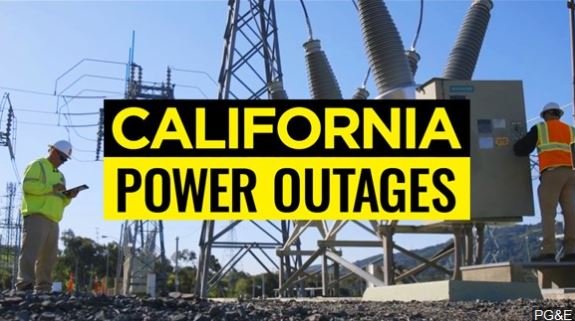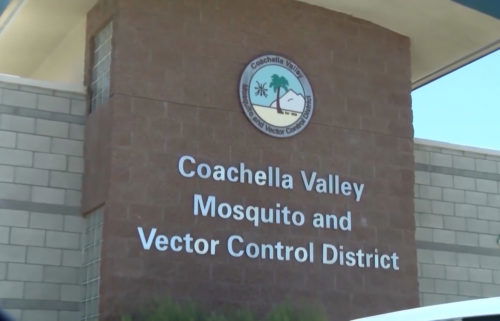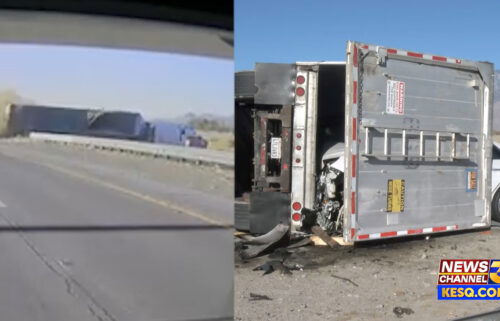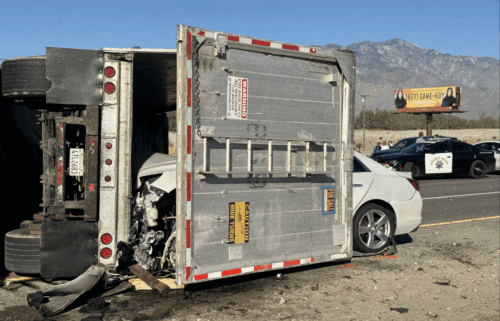Outage warnings canceled for Monday night; Another flex alert set for Today
Executives with the California Independent System Operator -- which controls roughly 80% of the state's power grid through Southern California Edison, Pacific Gas and Electric Company and San Diego Gas & Electric -- said statewide rolling blackouts affecting up to 3.3 million California homes could begin as early as 4 p.m. today, however, outage warnings were canceled Monday night.
Another statewide flex alert will be issued Tuesday from 3 p.m. to 10 p.m.
No power outages expected tonight, thanks to lower temperatures and conservation. #FlexAlert in effect 3-10 pm tomorrow. Help make a difference during the #heatwave. https://t.co/QdmTJJjJD6
— California ISO (@California_ISO) August 18, 2020
California ISO asks the individual utilities to shed power pro-rata to balance the state grid and then the power companies will follow their own protocols in deciding which neighborhoods will lose power and when, according to the state agency.
Find out if your block could lose power at SCE.com
If the estimates hold, more than twice as many households will be affected by these blackouts than when California last instituted blackouts in 2001.
Authorities said outages in individual areas would likely last about two hours on average, including time to bring blocks of homes back online. However, high-risk fire areas could take more time to bring back online, given safety concerns.
All California households were asked to take measures to conserve energy during the hours of 3 p.m. to 10 p.m., including Southern California Edison.
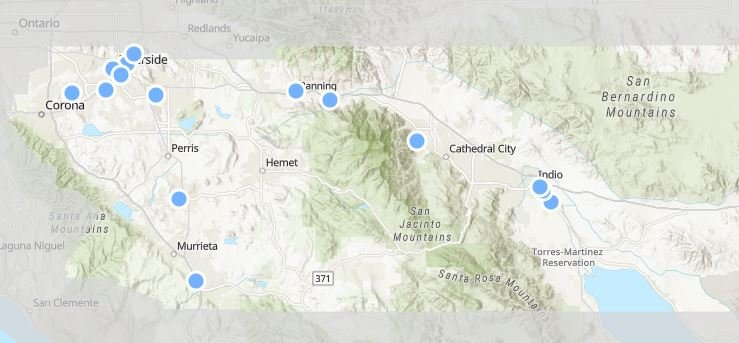
Whether SCE customers would receive any warning more specific than the Flex Alert asking them to restrict power usage and news reports about the potential for widespread blackouts was not immediately clear.
IID is not a member of CAISO and is not obligated to follow its rotating outage orders, according to the utility, which provides water and electricity to the Imperial Valley and power to the eastern part of the Coachella Valley.
Earlier Monday, Gov. Gavin Newsom warned Californians to be prepared for more rolling blackouts over the next 72 hours -- which he called "very likely" -- as the state struggles to meet demand for electricity during a historic, record-breaking heat wave. California is currently about 4,400 megawatts short of what it needs to supply energy to everyone who demands it Monday, Newsom said.
That estimate may be coming down based on conservation measures already underway, which might also allow officials to delay outages until 7 or 8 p.m. Monday, according to California ISO executives. However, some outages seem inevitable.
Newsom agreed that despite using "all the tools in the tool kit" to meet demand,we are likely to fall short'' as oppressive temperatures stress
the state's energy system. Newsom noted that temperatures in Death Valley reached 130 degrees
Sunday, a peak not hit since at least 1931, according to the National Weather Service. And, he added that "rather extraordinary weather conditions" also have put firefighters under enormous pressure as they battle wildfires across the state.
"These next few days we are anticipating a challenge,'' the governor said, as he outlined efforts to buy more power out of state, work with the biggest users of energy -- including large container ships --- to limit use and better manage the state's supply.
Newsom said the state should have been better prepared to avoid unscheduled blackouts.
"You can't control the weather but you can prepare for weather events," Newsom said. "We failed to prepare … I'm ultimately accountable.''
Big power users are being allowed to shift to backup sources and stored energy that is typically restricted as state officials work to urgently deploy more resources systemwide, according to the governor.
Newsom pointed to the state's shift to renewable resources as part of the reason for the supply shortage. Shutting down polluting gas power plants
has created gaps in the state's energy supply, he said.
While the state remains committed to a greener future, Newsom said, "We cannot sacrifice reliability" and promised that officials would be "much more aggressive … in making sure that is the case."
Gas power plants, sometimes referred to as "peaker plants" to be relied on only to meet peak demand, could conceivably be brought back on line within the 72-hour period, Berberich said, but maintenance issues could pose problems.
California ISO would not control that process and Berberich could not say which power plants might be considered. Out-of-state supply, which accounts for about 25% of California's energy, is currently limited.
"We can't get the energy that we would normally get out of state because it's being used to serve load natively,'' Berberich told reporters. "On most days, it does close the gap."
A statewide Flex Alert calling for residents to voluntarily conserve electricity remains in effect through Wednesday.
Officials are also urging businesses statewide to restrict their usage. In some cases, the state is asking business owners to support outreach to their customers about conserving energy.
Newsom named Telsa, a major manufacturer of electric vehicles, as one of the businesses working closely with the state.
The California Independent System Operator issued the Flex Alert on Sunday, saying there is insufficient energy to meet high consumer demand during the record-breaking heat wave. To minimize the need for controlled outages, residents were asked to use air conditioning early in the day and set thermostats at 78 in the afternoon and evening hours, while avoiding the use of major appliances between the hours of 3 p.m. and 10 p.m. The alert followed blackouts Friday and Saturday that Newsom said came without warning. He called the weekend service disruptions "unacceptable'' and announced Monday that he had signed an emergency proclamation to free up energy capacity.
The proclamation allows some users and utilities to access backup energy sources to relieve pressure on the grid during peak times. The state initiated some rolling blackouts Friday for the first time since 2001 and again on Saturday and Sunday.
On Saturday, high temperatures increased electricity demand while one power plant was down and wind power fell short, prompting a Stage 3 Electrical Emergency that lasted 20 minutes. It was called at 6:28 p.m., making rolling outages imminent or in progress, according to the California Independent System Operator.
Stay up to date on the latest weather update by downloading our First Alert Weather App for iPhone and Android.
Over the weekend, state officials worked to bring more resources online, including increased power from LADWP, the California State Water Project and investor-owned utilities, according to the governor's office. LADWP is expected to supply 900 megawatts of power to the state grid Tuesday.
"That's thousands and thousands of homes that would otherwise lose power," Berberich said.
On Sunday, Newsom met with members of the California Independent System Operator, California Public Utilities Commission, California Energy Commission, Governor's Office of Emergency Services and senior administration officials. In a letter written after the meeting, the governor said the blackouts were called Friday and Saturday without notice and demanded an investigation.
"Residents, communities and other governmental organizations did not receive sufficient warning that these de-energizations could occur. Collectively, energy regulators failed to anticipate this event and to take necessary actions to ensure reliable power to Californians,'' Newsom wrote. "This cannot stand. California residents and businesses deserve better from
their government.''
Power providers say a lack of supply from sources outside the state contributed to the shortage, as other Western states struggled to meet their own demand during the heat wave.
During his midday Monday news conference, the governor promised the investigation would be swift and comprehensive.
Residents struggling to stay cool in the past have been able to access theaters, swimming pools, public libraries and community centers, but these gathering places have been largely closed due to COVID-19. A list of cooling centers open across the county is available at lacounty.gov/heat.
In order to save as much energy as possible, consumers are urged to shift their use to morning and nighttime hours and avoid using appliances and air conditioning in the late afternoon and evening hours. Late in the day, temperatures remain high but solar production falls as the sun sets.
Tips for conserving energy include:
-- set air conditioning thermostats to 78 degrees;
-- defer use of major appliances;
-- turn off unnecessary lights;
-- unplug unused electrical devices;
-- close blinds and drapes;
-- rely on fans when possible; and
-- limit time the refrigerator door is open.
Consumers can also pre-cool their homes during earlier hours, when they can also charge electric vehicles, medical equipment, mobile devices and laptops and run major appliances. Pool pumps can be set to run in the early morning or late at night.
More conservation tips, along with safety measures to be taken in the event of outages, can be found at flexalert.org.
